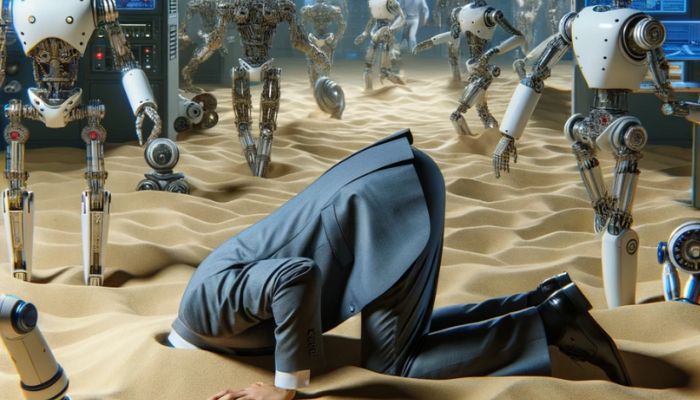As technology progresses, many jobs face the threat of automation as robots replace human workers. With the rapid advancement of artificial intelligence and robotics, a diverse range of professions are undergoing substantial change.
Here are 25 jobs on the brink of machine takeover
Drivers
With the advent of self-driving technology, the need for professional drivers is diminishing rapidly. Autonomous vehicles are poised to revolutionize transportation, rendering millions of driving jobs obsolete.
Factory Operators
Automation is transforming manufacturing processes, leading to a decreased demand for human operators. Robots are increasingly taking over tasks once performed by factory workers, from production line operations to inventory management.
Travel Agents
Online platforms have replaced traditional travel agencies, allowing users to book flights and accommodations with ease. The rise of digital travel planning has eliminated the need for human intermediaries.
Telephone Operators
Automated customer service systems are handling a significant portion of client inquiries, reducing the need for human operators to field calls and address issues.
Printing Houses
The shift towards digital media and automated printing processes is leading to the closure of traditional printing houses. Robots are streamlining production and reducing reliance on human labor.
Waiters
Self-service technology in restaurants enables customers to order and pay for their meals without the assistance of waitstaff. Automated ordering systems eliminate the need for human servers in many establishments.
Ticket Clerks
Online ticketing platforms and vending machines are replacing human ticket clerks at cinemas and event venues. Automation is streamlining the ticketing process and reducing staffing requirements.
Insurance Agents
AI systems are increasingly handling insurance-related tasks, from policy management to claims processing. Automation is transforming the insurance industry and reducing the need for human agents.
Cashiers
Self-checkout systems and digital payment methods are reducing the need for human cashiers in retail environments. Automation is streamlining the checkout process and improving efficiency.
Constructors
Construction automation technologies, such as Semi-Automated Mason (SAM), are augmenting human labor and increasing productivity. Robots are performing tasks traditionally carried out by construction workers, reducing the need for manual labor.
Bank Tellers
Online banking and ATMs have reduced the demand for human bank tellers. Automation has transformed the banking industry, allowing customers to conduct transactions without visiting a physical branch.
Doctors
While robots are assisting in medical procedures and diagnostics, the role of human doctors remains indispensable. Automation is augmenting healthcare processes but is unlikely to replace human expertise and empathy fully.
Stock Clerks
Robots like Tally are automating inventory management tasks in retail environments. Automation is improving accuracy and efficiency in stock management, reducing the need for human clerks.
Financial Analysts
AI-powered algorithms are increasingly performing financial analysis and trading tasks. Automation is transforming the finance sector, leading to a reduction in the demand for human analysts.
Lawyers
AI-powered legal software is streamlining document review and contract analysis, reducing the need for human lawyers in certain tasks. Automation is reshaping the legal profession, but human expertise remains crucial in complex legal matters.
Seamstresses and Dressmakers
Robots in the textile industry are automating garment production processes, reducing the need for human labor. Automation is increasing efficiency and precision in textile manufacturing.
Mail and Delivery Workers
Robots and drones are being used for package delivery, reducing the need for human mail carriers. Automation is transforming the logistics industry, improving delivery speed and efficiency.
Cleaners
Cleaning and disinfecting robots are assisting humans in maintaining cleanliness in various environments. Automation is improving hygiene standards and reducing the need for manual cleaning labor.
Architects
Specialized programs are automating the design of routine buildings, reducing the need for human architects in certain tasks. Automation is streamlining architectural processes, but human creativity remains essential in innovative design projects.
War Pilots
Unmanned aerial vehicles (UAVs) are replacing human pilots in military operations. Automation is reshaping warfare, with drones performing reconnaissance and combat missions.
Fast Food Chain Workers
Automation is increasingly used in fast-food kitchens to streamline food preparation processes. Robots and machines are reducing the need for human labor in cooking and assembly tasks.
Security Guards
Advanced surveillance systems are reducing the need for human security personnel. Automation is improving security standards and reducing reliance on human guards.
Real Estate Agents
Online platforms and apps are enabling users to search for housing options without the assistance of real estate agents. Automation is transforming the real estate industry, reducing the need for human intermediaries in property transactions.
Farmers
Robots are automating various agricultural tasks, from planting to harvesting, reducing the need for human labor on farms. Automation is increasing efficiency and productivity in agriculture.
Journalists
Automated systems are generating news articles and reports, reducing the need for human journalists in certain tasks. Automation reshapes the media landscape, but human journalists remain essential in investigative reporting and storytelling.


